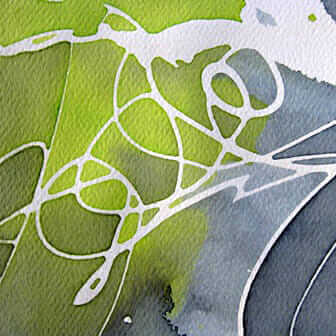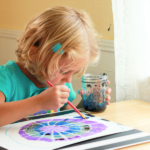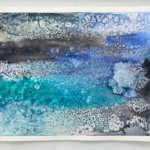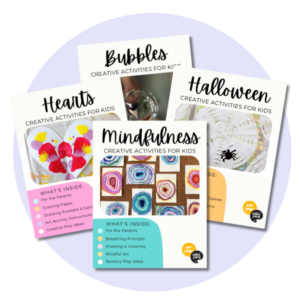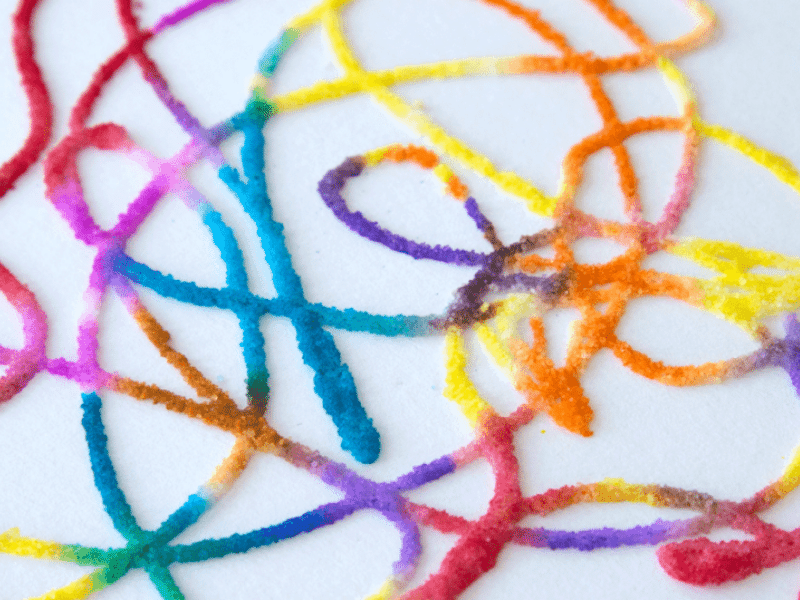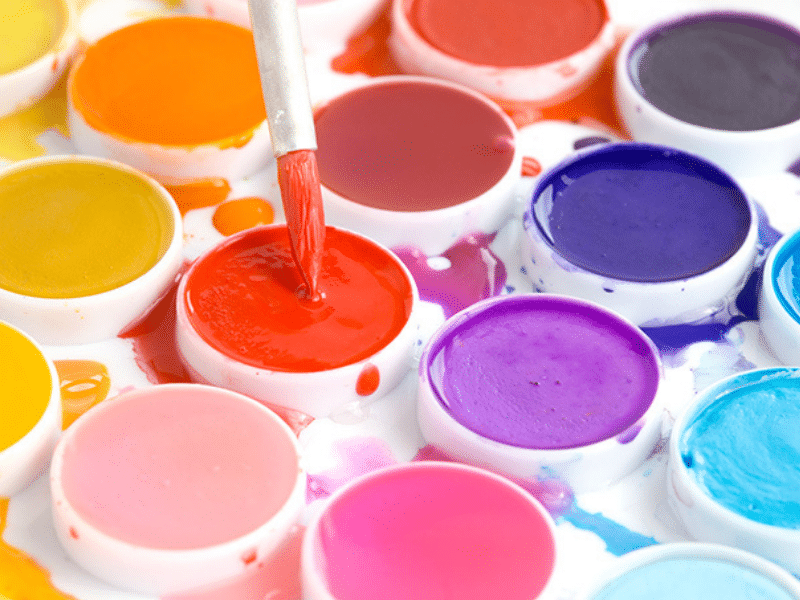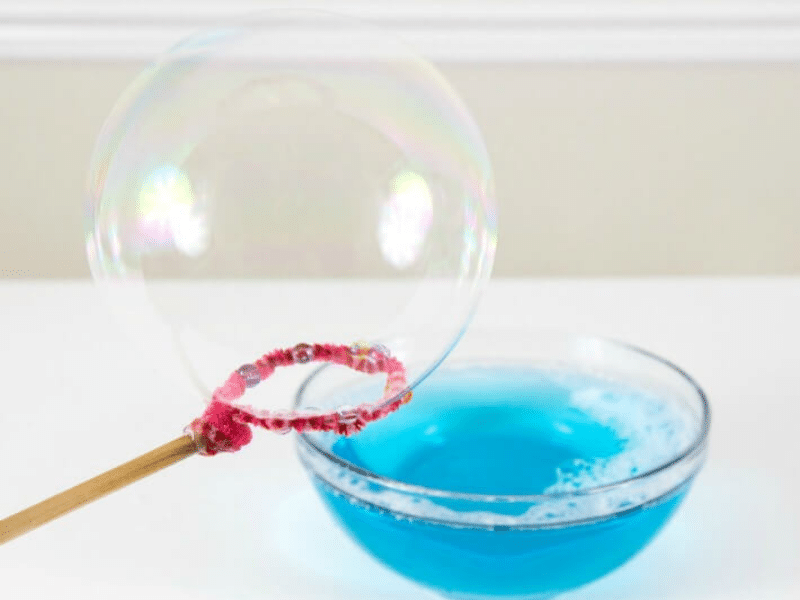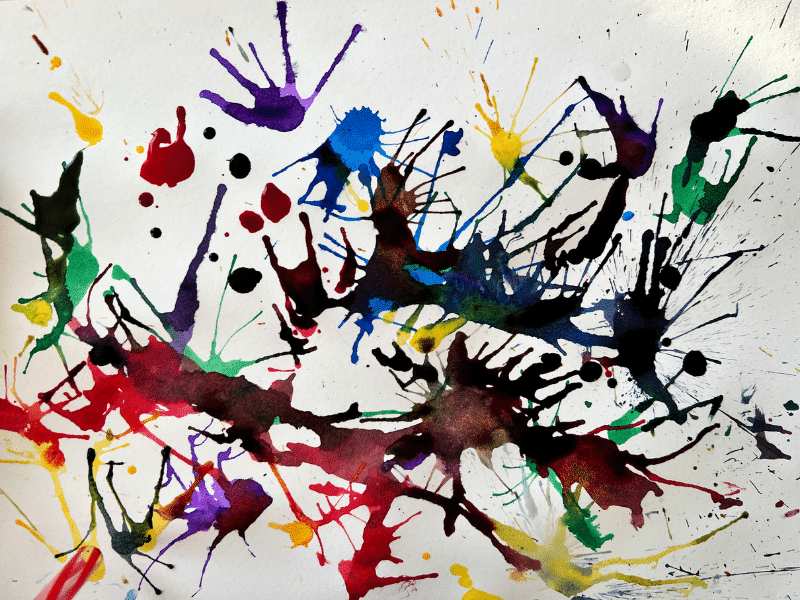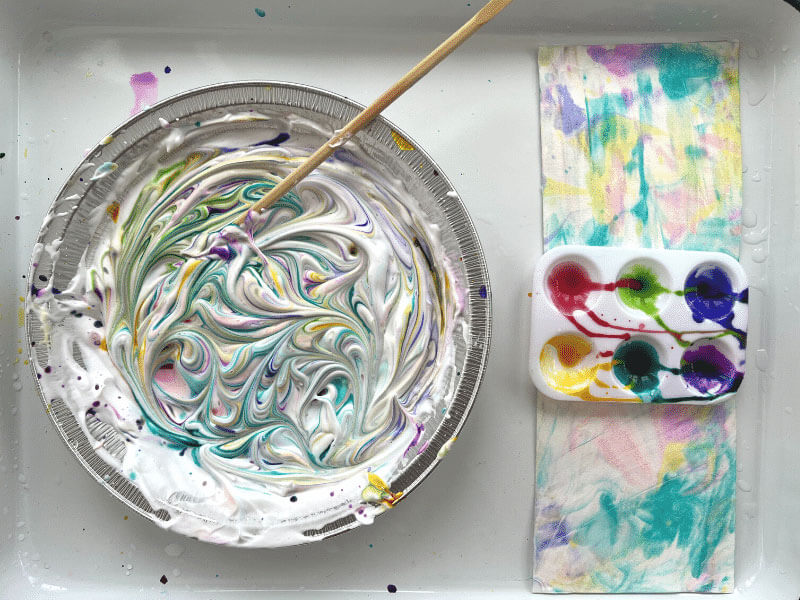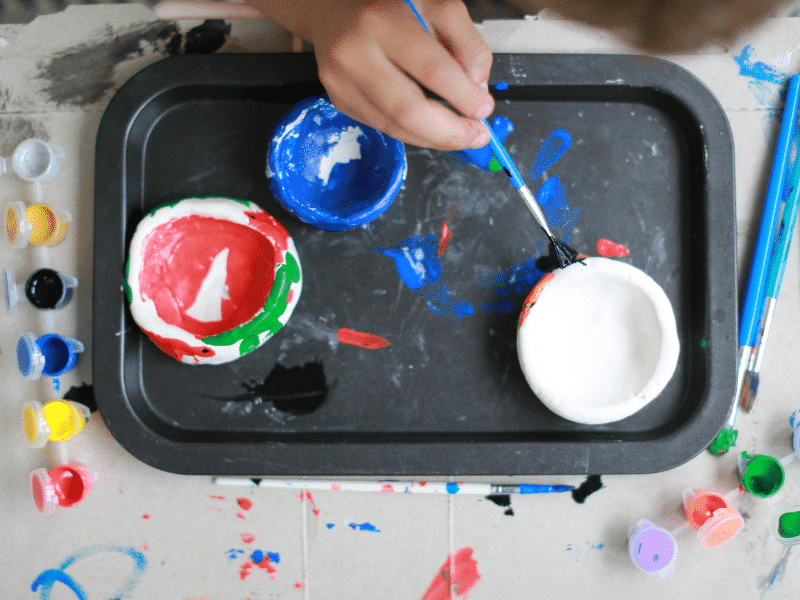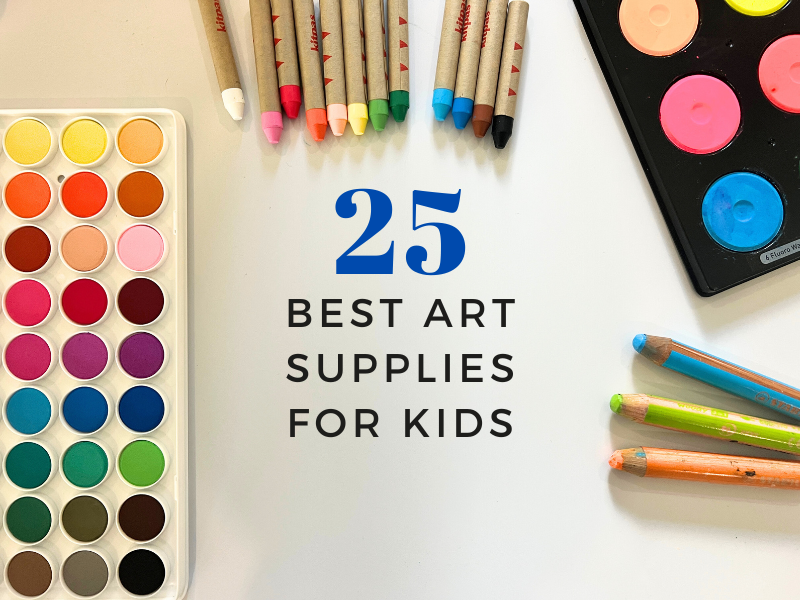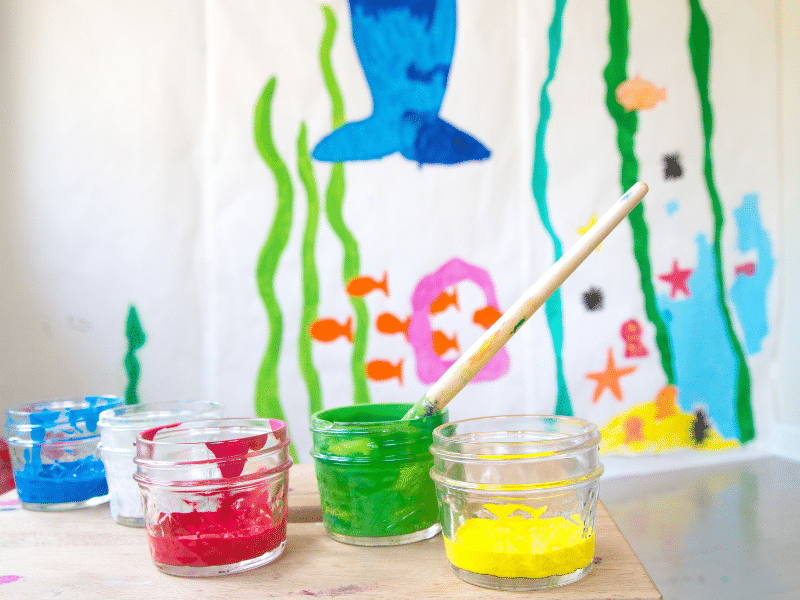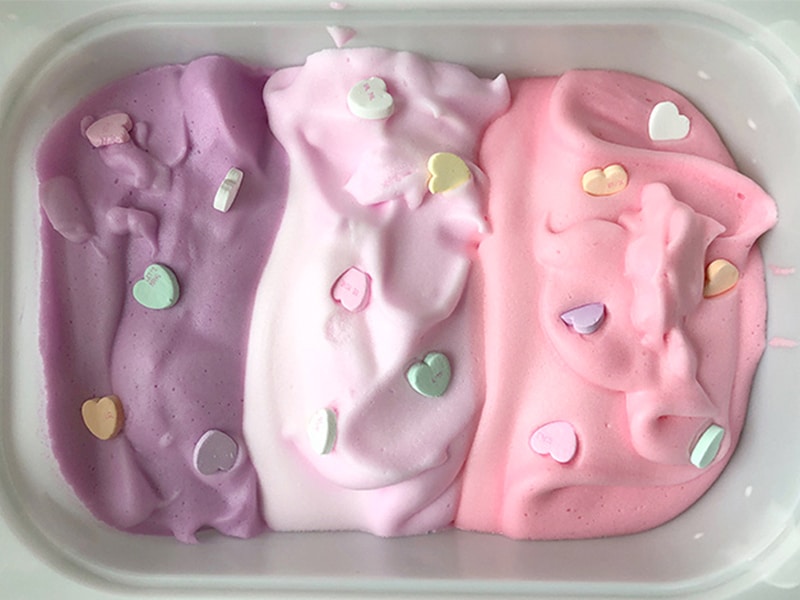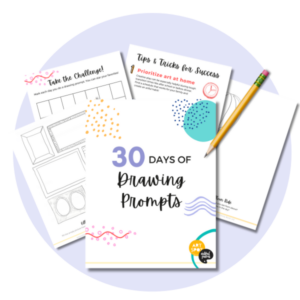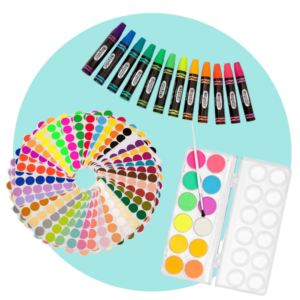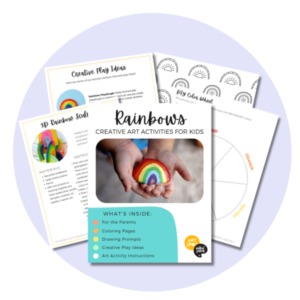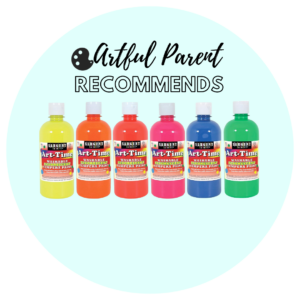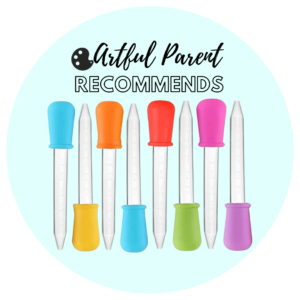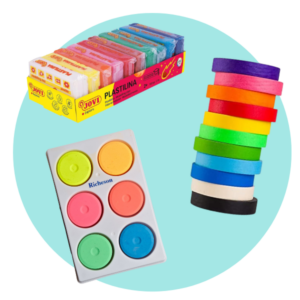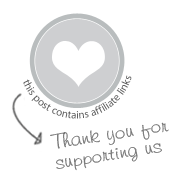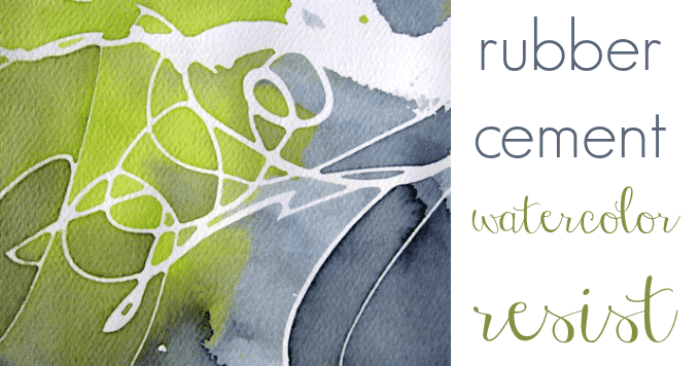
Thanks for all your comments yesterday! I’m feeling better today. A little less overwhelmed.
Maia and I tried another fun watercolor resist earlier this week. With rubber cement!
Rubber Cement Resist with Watercolors
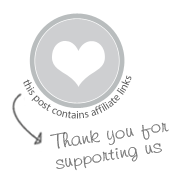
MATERIALS
- Watercolor paper or cardstock
- Rubber cement
- Watercolor paint (we used liquid watercolors)
INSTRUCTIONS
I had picked up a book called Watercolor Essentials from the library. It’s one of the many watercolor technique books (for adults) out there. I skimmed through it, looking for ideas that would work for kids and came across this one. It’s the same idea as using masking fluid, which I’ve done in the past, but with rubber cement instead.
The cool thing about rubber cement is that it comes with it’s own little brush! At first Maia brushed the rubber cement on the paper, but she soon noticed that it was easy to “draw” fun curlicue lines all over the paper by holding the brush in the air above and letting the rubber cement dribble down.
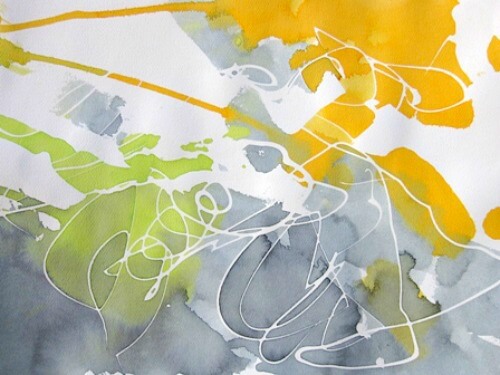
After creating your design on the paper, let dry, then paint over it with watercolors. We used liquid watercolors this time, but any would work. After the paint dries, you can rub the rubber cement off with your thumb. It comes off easily and leaves the pure white paper underneath.
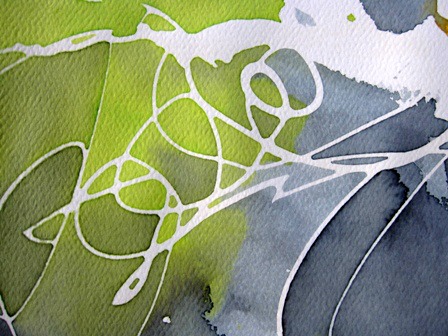
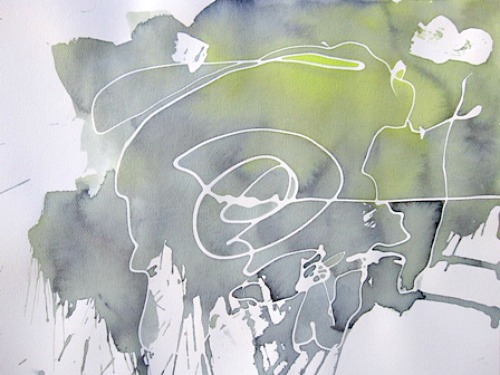
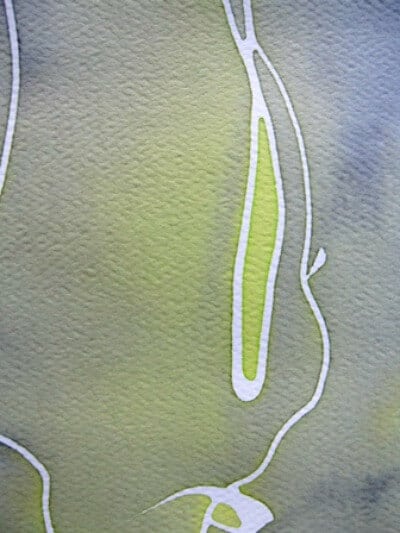
This is a detail of the painting above it. The rubber cement creates barriers to the paint, allowing different colors and intensities to exist side by side.
By the way, one of the not-so-cool things about rubber cement is that it’s smelly and somewhat toxic. We used it with the windows open and fan on. If you decide to use it, I’d make sure the project is ventilated, well-supervised, and of short duration.
Maia and I both loved this project though! The process is fun and the result is beautiful. I did a couple paintings myself alongside her.
How about you? Have you tried rubber cement resist?
More Rubber Cement Resist Art ::
Pin It for Later ::
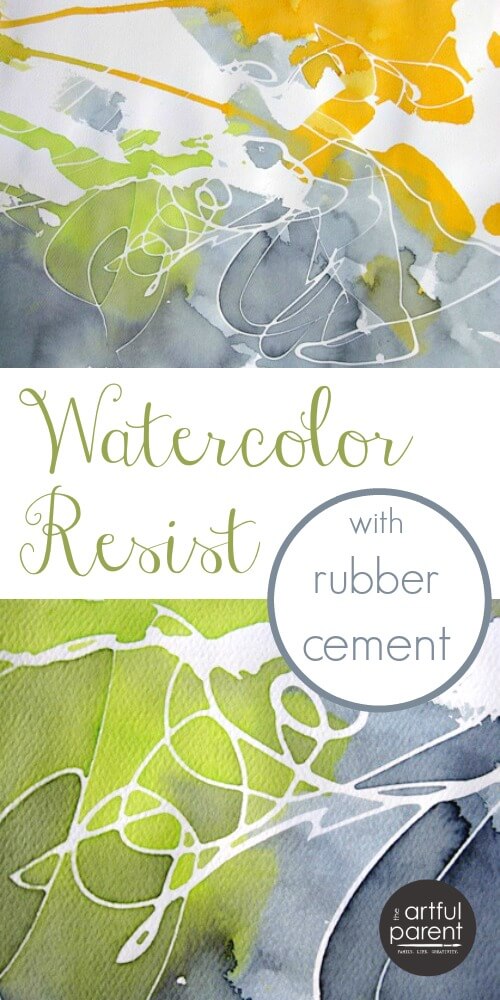
Related Posts
-
5 Easy Watercolor Ideas Using Resist Techniques
Watercolor resist techniques are so much fun for kids to explore! Here are 5 easy…
-
How to Do Watercolor Painting with Salt
Get a starry night sky effect by painting with watercolors and salt. This easy watercolor…
-
How to Do Watercolor Painting with Salt
Get a starry night sky effect by painting with watercolors and salt. This easy watercolor…

